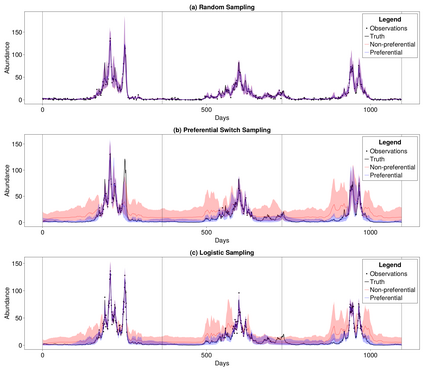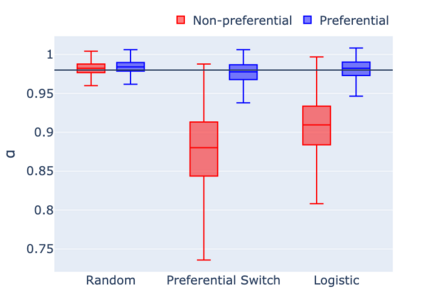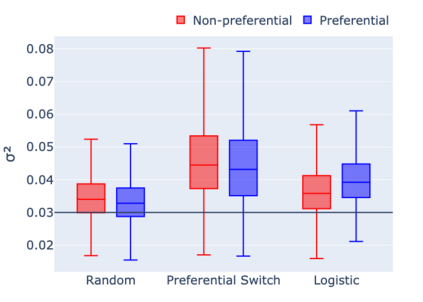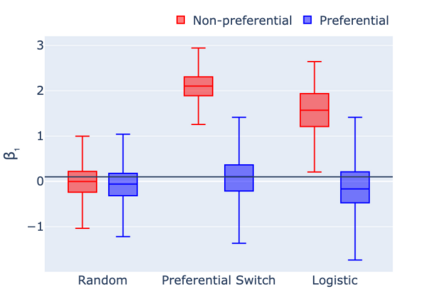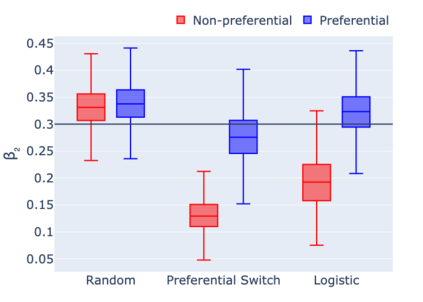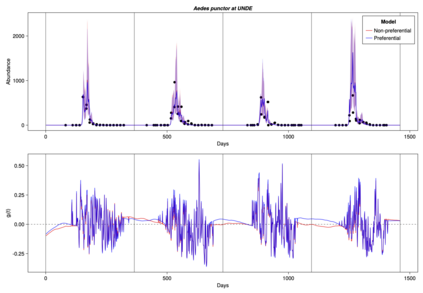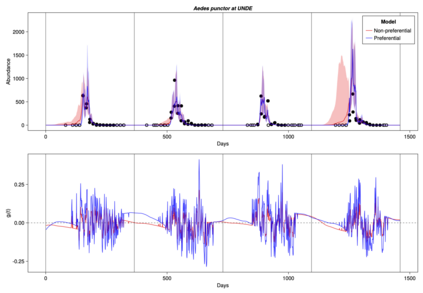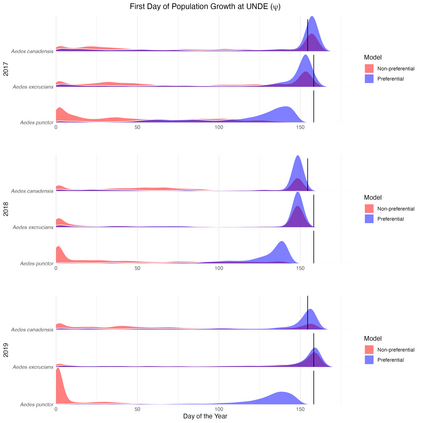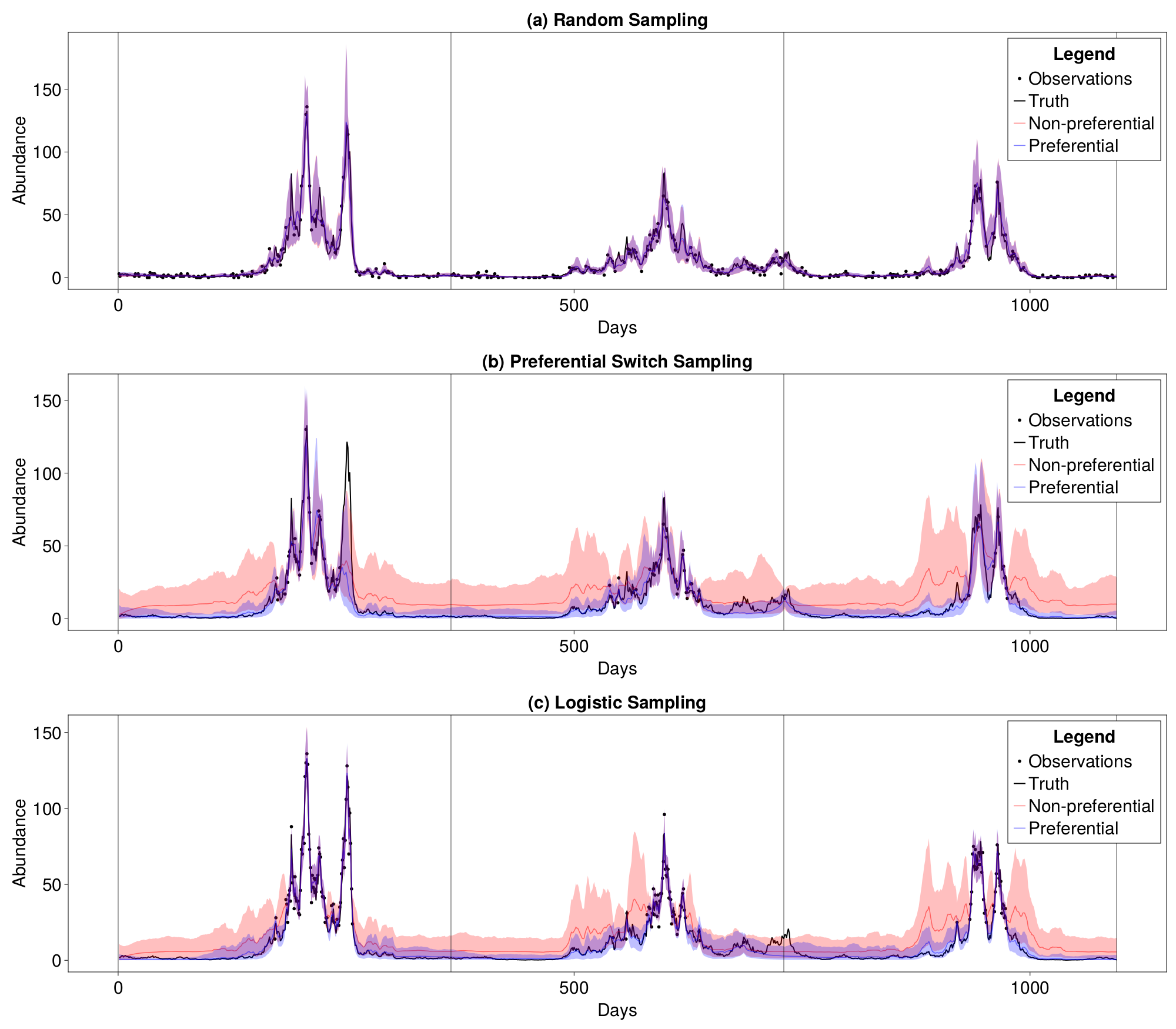To study population dynamics, ecologists and wildlife biologists use relative abundance data, which are often subject to temporal preferential sampling. Temporal preferential sampling occurs when sampling effort varies across time. To account for preferential sampling, we specify a Bayesian hierarchical abundance model that considers the dependence between observation times and the ecological process of interest. The proposed model improves abundance estimates during periods of infrequent observation and accounts for temporal preferential sampling in discrete time. Additionally, our model facilitates posterior inference for population growth rates and mechanistic phenometrics. We apply our model to analyze both simulated data and mosquito count data collected by the National Ecological Observatory Network. In the second case study, we characterize the population growth rate and abundance of several mosquito species in the Aedes genus.
翻译:为了研究人口动态、生态学家和野生生物生物学家使用相对丰度数据,这些数据往往受到时间上的优先抽样;当取样工作不同时,即进行时间上的优先抽样;为了考虑优先抽样,我们具体规定了一种贝叶斯等级丰度模型,该模型考虑到观察时间和生态过程之间的依赖性;拟议模型在不经常观测期间改进丰度估计,并在离散时间进行时间上优度抽样;此外,我们的模型有助于对人口增长率和机械性人体测量进行后视推推推;我们运用我们的模型,分析国家生态观测网收集的模拟数据和蚊子计数数据;在第二个案例研究中,我们描述Aedes genus 中若干蚊虫种的人口增长率和丰度。

